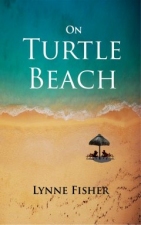
You’ve edited your novel or story several times, maybe paid someone to do it for you, and after making further critical editing changes, the only thing left remaining is the final proofread, reading it out loud as you go. Really? I hear you ask. The very final thing? You mean, then it will be finished?….Well, no, you might, like me, have decided to go through it one last time from a printed-out copy. And one can always question whether a piece of writing is ever really finished….
But we have to have a stopping point. It may be at the point of preparing to self-publish, or it may be being proofread for you through a publisher. You may be wondering if writers should proofread their work at all, and I have read several arguments advising well against it – Employ someone! For goodness’ sake! You can’t possibly spot your own mistakes. Jeez!
Well, I would say it depends upon whether you are the methodical tenacious type, whether you have an eye for detail, and whether you are determined enough…and aren’t all those qualities needed to be a writer? Personally, I’ve decided not to employ someone, because I knew that even if I paid a professional to do this time-consuming,150,000 word read through, for a quite understandable fee of around £1000, then I would still end up going through it by myself anyway, page by page, paragraph by paragraph, sentence by sentence. I’ve already learnt a reasonable amount of grammar rules during my studying, and whilst writing my novel, I tended to solve grammar problems as they cropped up because I was genuinely interested. So I felt in a good place to proofread my novel and comfortably set about it. And as I did, I kept coming across silly little things that kept repeating, that hadn’t seemed worthy of any attention before, so I thought I would share with you the majority of what I jotted down for reference. All formatting issues aside, this is a rather disparate list of points that I noticed kept cropping up, over and over again.
AND HERE THEY ARE:
It’s and its – I expect you could foresee this one, and it’s always been a bugbear for me. Best to think of it this way – it’s always means it is, or it has. It does not denote ownership. The dog wagged its tail, is correct. The dog’s tail wagged wildly is correct. The dog wagged it’s tail is not. The ring’s setting was beautiful is correct, not it’s setting was beautiful.
Referring to the time – keep it consistent throughout eg 1pm, 11.30, OR one o’clock (no space in o’clock) , half eleven. (And the word form reads best within dialogue)
Numbers – numbers up to 12 can be spelled out eg ten, twelve. One word numbers can be spelled out eg forty, sixty. Two/more word numbers should be expressed in figures eg 25, 68, 1005.
Larger numbers should have a comma as a thousand separator eg 57,950 square miles
Millions? – use figures plus a word eg 350 million
Don’t start a sentence with a figured number.
Spell out the decades and centuries eg the sixties, the nineteenth century
How to deal with two numbers next to each other? Write one as a figure and one as a word eg six 14 year-olds, ie. not 6 14 year-olds. And two 2.5L bottles of water, not 2 2.5L bottles of water
Be consistent within one sentence eg In the end 6 students passed the exam out of a total of 45.
Measurements – 5’7’’in height, you can express as five foot seven
Titles of songs, poems, stories, articles – Put the title of these within quotation marks, but the title of the album/collection, or publication the work is located inside of, is italicised.
Books, newspapers, magazines, films – are all italicised
Keep the spelling of words consistent – eg café all the way through, OR cafe. Similarly T-shirt, OR t-shirt.
Check spelling of certain expressions – eg For goodness’ sake is correct (for goodness’s sake is not)
Plants – there are no capitals for common plant names eg birds-foot trefoil, giant hogweed
Watch your contractions – there’re means there are, not they are
Dress sizes – size twelve, size fourteen
The use of then as adverb/adjective and in colloquial speech.
‘Where are you going then?’ (meaning where are you going afterwards?, no comma necessary)
‘Where are you going, then?’ (colloquial speech, as in ‘Forget it, then!’, comma necessary)
Watch you pronouns – he, she, her, or him as substitutes for characters names. If the names are spelled out each time, it’s really clunky to read. But if the pronoun replacements aren’t clear as to which character they are referring to, then it is very confusing and spoils the read. I read a novel a few years ago by a very well-known author which demonstrated this problem. I just couldn’t distinguish who was speaking or being referred to half the time. It can make the reader feel stupid – and that has to be a real no, no.
Characters addressing other characters within dialogue:
‘What are you playing at, Lucy?’ (with a comma before the name)
Not – ‘what are you playing at Lucy?’
Each other – not eachother. And each other’s has the correct use of the apostrophe.
Anymore or any more? Correct usage is this: I don’t buy handbags anymore, because I don’t need any more of them
Use of hyphens as word connectors: self-conscious, well-tended garden, self-absorbed, well-fattened pig
So these are all the points I needed to refer to regularly in my proofreading, and I hope they are of some use to you. I have come across a really comprehensive list of tips for any kind of writing, which I have duly printed off for future use. If you are interested you can find it here. Of course, you can strive for perfection, but know that it doesn’t exist and that everyone, even professional proofreaders make mistakes. We all spot a few errors as readers, but as long as they don’t mount up, they don’t spoil my reading and I certainly have better things to do with my time than report them. As we know, there are certain people out there who love to spot the grammatical mistakes of others – don’t let them get to you. They can bring you up on a spelling, but would they venture to write a novel?
And on that note, I plan to move along this year with self-publication of On Turtle Beach. But to keep myself comfortable, I’ve decided not to blog about my progress…however, I will be keeping a record of the stages, and afterwards, I will report back to you anything I think might be useful.
So a very practical blog post this week for you ;>)
And if you have any more proofreading tips to share , they would be most welcome.
Happy writing and creating!
(image courtesy of pixabay)
















Useful blog Lynne. I’ll share it with my friends, just in case any of them are finishing or in the middle of a novel. Now is my grammar correct, if its (whoops) it’s not…….
LikeLike
Thanks, Sylvia! Grammar is really tricky, we think we know, but there is always more to learn – and that’s only one language!
LikeLike
Interesting list. I will keep this in mind in case I ever finish a story haha! My grammar issue is over or under use of commas. I just can’t seem to strike a balance.
LikeLike
Hi Laura,
I have this too, as I do have a tendency to long sentences. But Stephen King uses very long sentences frequently and I enjoy them. But of course, you really do need those commas for clarity. So clarity for me comes first.
LikeLiked by 1 person
This a great guide to keep around for editing. Thanks for making this! It’s always nice to have a refresher once and a while.
LikeLike
You’e most welcome, Akaluv. I couldn’t believe how many kept cropping up!
LikeLiked by 1 person
Thanks for this, Lynne – and SPECIAL thanks for elucidating the difference between “it’s” and “its.” It’s been my biggest peeve for a long time. I even get emails from University professors who misspell the third person singular possessive pronoun. Drives me nuts, because it triggers my undying sense that I was born in the wrong generation. Anyway – these are all very helpful proofreading tips. If I can think of any others, I’ll let you know.
LikeLike
Hi A.P., yes it’s and its is a killer, I first got it corrected with uni assignments, and that was years ago, but it still gets me all the time. A teacher friend finally gave me the tip of it’s always means it is, and that has done the trick.
LikeLiked by 1 person
I can understand the difficulty with it. Me personally, I’ve had it ingrained in me since childhood (when I read a book called *Plain English* which no doubt is out of print by now.) I understand why people tend to assume there ought to be an apostrophe in the third person singular possessive pronoun, since possessive nouns often include apostrophes. But thinking of “it’s” as “it is” is, as you say, a good and fairly easy way to avoid that trap. I’m glad you place it first on the list.
LikeLike
Yes, there is something fundamentally contradictory about it, isn’t there? That must be why so many get it wrong. I didn’t tackle what its, is all about. Here is what I found ‘Its is the possessive form of it, meaning ‘of it’. This is possibly why the difference between it’s and its causes so many problems. Its, without an apostrophe, is a possessive form, where an apostrophe is usually required. It is similar to words like his and hers, neither of which needs an apostrophe.’ So there we are!
And here is a link to a test!
LikeLiked by 1 person
Right. If we are writing about the “house of John” we write “John’s house” with an apostrophe. Possessive noun. Somehow, the possessive pronoun in this context isn’t supposed to have an apostrophe, and the apostrophe goes somewhere else instead. That’s what hangs people up. But another helpful thing is to look at the word I just wrote: “that’s.” Why would “it’s” be any different than “that’s” (?) They’re both what we call “contractions.” Anyway, my mind was imbued with all this stuff when I was too young to be able to forget about it. I haven’t checked any of my answers on the quiz yet, but I’ve got a screenshot for you if I can figure out how to send it. It was fun to take. 🙂
LikeLike
I think we’ve just about sussed it now.Thank heavens. You expressed this well with your example.
LikeLiked by 1 person
Thank heavens indeed. I hope I wasn’t too much of a pain in the ass. Hm – must be getting towards bedtime in your neck of the woods. Me? Just getting started! Tata.
LikeLike
It’s okay, Andy, you were just wanting to sort it out once and for all, and I’m glad we have. It’s coming up to tea time here, that’s around 5pm, where I come off the computer.So long for now.
LikeLiked by 1 person